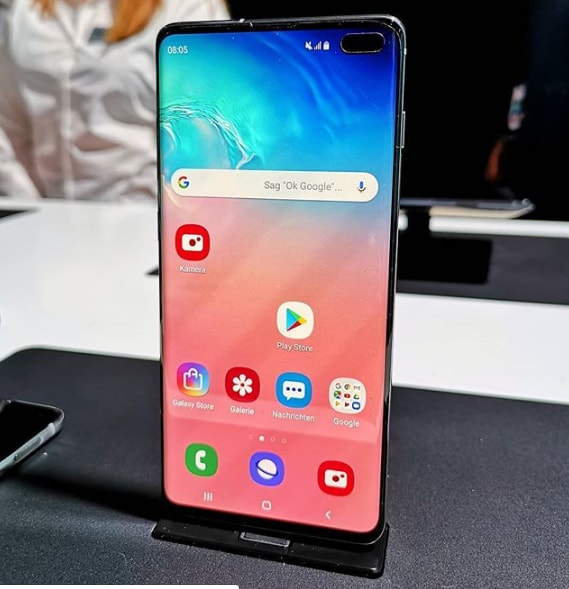
In today’s digital age, mobile phones have become an integral part of our lives. Unfortunately, this has also made them a prime target for cybercriminals and threat actors. Phone cloning is one such method that these malicious individuals use to gain unauthorized access to someone’s personal information. In this comprehensive guide, we will explore what phone cloning is, its potential dangers, and most importantly, how to reverse it in order to protect your mobile phone and personal data.
Understanding Phone Cloning
What is Phone Cloning?
Phone cloning refers to the unauthorized reprogramming of a mobile phone’s identity into another device. It involves tampering with someone’s telecommunication device, allowing hackers and criminals to make anonymous calls using another person’s phone number. This form of fraud is illegal in most countries and carries heavy penalties.
Every mobile phone has a unique identifier known as the International Mobile Equipment Identity (IMEI) number. Additionally, SIM cards have their own unique serial numbers called the Electronic Serial Number (ESN). To clone a phone, hackers must steal these numbers and use them to reprogram another device, essentially creating a replica of the original phone. However, the radio signal of the cloned phone will be slightly different from the original, which can alert service providers to the presence of a clone.
How Phone Cloning Works
Phone cloning typically involves obtaining the IMEI and ESN numbers of a target phone, which can be done through various means such as physical access, hacking into databases, or using malware. Once the numbers are obtained, the hacker uses specialized software to reprogram another device, such as a blank SIM card or a different phone, with the stolen numbers. This effectively transfers the identity of the target phone to the clone.
Once a phone is successfully cloned, the hacker gains access and control over the original line, allowing them to send and receive messages, make and receive calls, and even listen in on conversations if the original and cloned phones are within proximity of the same broadcast tower. This poses a significant threat as the hacker can intercept calls and messages meant for the owner of the phone, potentially gaining access to sensitive personal data.
The Dangers of Phone Cloning
The dangers of phone cloning are manifold. The most immediate danger is the unauthorized use of the cloned phone number to make calls, send messages, and browse the internet, all of which can result in financial loss for the original phone owner. Additionally, phone cloning allows hackers to access personal information, such as passwords, PINs, and bank logins, which can lead to identity theft and further financial harm.
Another significant danger of phone cloning is the interception of calls and messages meant for the owner of the phone. This not only compromises the privacy of the phone owner but also allows the hacker to gather sensitive information that can be used for malicious purposes. Moreover, the cloned phone can be used for illegal activities, with the original phone owner being wrongly implicated.
Signs of Phone Cloning
Unusual Phone Behavior
One of the first signs that your phone may have been cloned is if you notice any unusual behavior or functionality. This could include overheating, frequent crashes or freezes, unexpected battery drain, unexplained background noise during calls, or the camera app launching without prompts. If you experience any of these symptoms, it is essential to investigate further to determine if your phone has been compromised.
Unexpected Phone Bills
Another sign of phone cloning is unexpectedly high phone bills. If you notice a significant increase in your phone bill without any corresponding increase in your usage, it could be an indication that someone has been using your cloned phone number for unauthorized activities. In such cases, it is crucial to contact your service provider immediately to investigate the issue and take appropriate action.
Location Discrepancies
Cloned phones can often exhibit location discrepancies. If you use location tracking services on your phone, such as Find My iPhone or Find My Device, and notice that the location of your phone is different from where you actually are, it could be a sign that your phone has been cloned. This can be a result of the cloned phone being in a different location than you, but still connected to the same network.
Protecting Your Phone from Cloning
Protecting your phone from cloning requires implementing several security measures to safeguard your personal information and prevent unauthorized access. Here are some essential steps you can take to protect your phone:
Secure Your Personal Information
One of the most crucial steps in preventing phone cloning is to secure your personal information. Avoid sharing sensitive information such as your IMEI and ESN numbers with anyone unless it is absolutely necessary. Be cautious when downloading apps or providing personal details online, as these can potentially be used by hackers to gain unauthorized access to your phone.
Enable Two-Factor Authentication
Enabling two-factor authentication adds an extra layer of security to your phone. It requires a second form of verification, such as a fingerprint, facial recognition, or a unique code sent to your registered email or phone, to gain access to your device. This makes it significantly more difficult for hackers to clone your phone successfully.
Regularly Update Your Software
Keeping your phone’s software up to date is crucial for maintaining its security. Manufacturers often release software updates that include bug fixes and security patches to address vulnerabilities that could be exploited by hackers. By regularly updating your phone’s software, you can ensure that you have the latest security measures in place to protect against phone cloning and other potential threats.
How to Reverse Phone Cloning
If you suspect that your phone has been cloned, it is essential to take immediate action to reverse the cloning and protect your personal information. Here are the steps you can take to reverse phone cloning:
Contact Your Service Provider
The first and most crucial step is to contact your service provider as soon as you suspect phone cloning. They will have the necessary tools and expertise to investigate the issue and take appropriate action. Provide them with all the relevant details and any evidence you have regarding the cloning, such as unusual call records or suspicious activities on your phone bill.
Reprogramming Your Phone
Your service provider will guide you through the process of reprogramming your phone to reverse the cloning. This typically involves changing the IMEI number of your phone to a new, unique identifier. By doing so, the cloned phone will no longer have access to your personal data and will be effectively disconnected from your phone line. It is crucial to follow your service provider’s instructions carefully during this process.
Monitoring Your Phone Activity
After reversing phone cloning, it is essential to monitor your phone activity closely for any signs of suspicious behavior. Keep an eye on your phone bills, call records, and data usage to ensure that there are no unauthorized activities taking place. If you notice anything unusual or suspicious, report it to your service provider immediately.
Additional Security Measures
In addition to reversing phone cloning, there are several additional security measures you can take to protect your phone and personal information from future threats. Here are some recommendations:
Use Strong and Unique Passwords
Using strong and unique passwords for all your online accounts adds an extra layer of protection against unauthorized access. Avoid using easily guessable passwords and consider using a password manager to securely store and manage your passwords.
Beware of Suspicious Links and Downloads
Be cautious when clicking on links or downloading files from unknown or suspicious sources. These can potentially contain malware or phishing attempts that can compromise your phone’s security. Always verify the source and legitimacy of any downloads before proceeding.
Encrypt Your Data
Encrypting your data adds an additional layer of protection by scrambling your information, making it unreadable to unauthorized individuals. Most smartphones have built-in encryption features that you can enable to protect your personal data in case your phone falls into the wrong hands.
Frequently Asked Questions
Can You Prevent Phone Cloning?
While it is challenging to completely prevent phone cloning, you can take several proactive measures to minimize the risk. These include securing your personal information, enabling two-factor authentication, regularly updating your software, and being cautious of suspicious activities on your phone.
How Common is Phone Cloning?
Phone cloning is still a prevalent issue, although advancements in technology and security measures have made it more difficult for hackers to carry out successful cloning attacks. However, it is crucial to remain vigilant and take necessary precautions to protect your phone and personal data.
Can Phone Cloning Be Traced?
In some cases, phone cloning can be traced, especially if there are discrepancies in the radio signals between the cloned phone and the original phone. Service providers can detect these discrepancies and take appropriate action to investigate and prevent further unauthorized activities.
Conclusion
Phone cloning is a serious threat that can compromise your personal information and privacy. By understanding what phone cloning is and how it works, recognizing the signs of cloning, and taking proactive steps to protect your phone, you can significantly reduce the risk of falling victim to this type of attack. Remember to stay vigilant, keep your phone software up to date, and report any suspicious activities to your service provider immediately. By following these guidelines, you can safeguard your phone and personal data from the dangers of phone cloning.
Stay Vigilant and Protect Your Phone
Protecting your phone from cloning requires a proactive approach. Stay informed about the latest security threats and take the necessary steps to keep your phone and personal information secure. By adopting a cautious mindset and implementing robust security measures, you can enjoy your mobile phone without the fear of falling victim to phone cloning.






